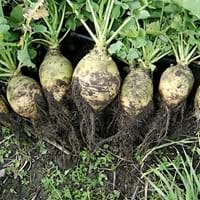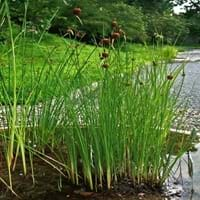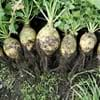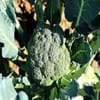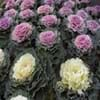Life Span
Biennial
Perennial
Origin
Hybrid origin
Eastern Europe, Western Asia
Types
Argentine canola
annua – annual rape and summer rape
swede rape
pabularia – Hanover-salad
Common Cattail, Southern Cattail, Dwarf Bulrush
Number of Varieties
Not Available
Habitat
Not Available
Lake margins, Ponds, Swamps
USDA Hardiness Zone
6-9
3-11
Sunset Zone
A1, A2, A3, H1, H2, 1a, 1b, 2a, 2b, 3a, 3b, 4, 5, 6, 7, 8, 9, 10, 11, 12, 13, 14, 15, 16, 17, 18, 19, 20, 21, 22, 23, 24
21,22
Habit
Rosette/Stemless
Upright/Erect
Flower Color
Yellow, Light Yellow
Yellow, Green, Brown, Chocolate
Flower Color Modifier
Bicolor
Not Available
Fruit Color
Tan, Brown
Light brown, Light Red
Leaf Color in Spring
Black, Green, Green, Dark Green
Green, Dark Green
Leaf Color in Summer
Green, Blue Green
Green, Dark Green
Leaf Color in Fall
Green, Blue Green
Green, Dark Green
Leaf Color in Winter
Green, Blue Green
Brown
Leaf Shape
Ovate
Long linear and narrow
Plant Season
Spring, Summer, Fall, Winter
Summer, Fall, Winter
Sunlight
Full Sun
Full Sun, Partial Sun
Type of Soil
Loam, Sand
Clay, Loam, Sand
The pH of Soil
Acidic, Neutral
Acidic, Neutral
Soil Drainage
Well drained
Poorly Drained
Bloom Time
Spring, Late Spring, Early Summer, Summer
Summer, Late Summer, Early Fall
Tolerances
Drought
Wet Site
Where to Plant?
Ground
Container, In Water
How to Plant?
Seedlings
Runners
Plant Maintenance
Medium
Low
Watering Requirements
Water frequently while growing, Water slowly, and allow to dry completely between soakings
Plant grows in water
In Summer
Lots of watering
Aquatic Plant
In Spring
Moderate
Aquatic Plant
In Winter
Average Water
Aquatic Plant
Soil pH
Acidic, Neutral
Acidic, Neutral
Soil Type
Loam, Sand
Clay, Loam, Sand
Soil Drainage Capacity
Well drained
Poorly Drained
Sun Exposure
Full Sun
Full Sun, Partial Sun
Pruning
Remove damaged leaves, Remove dead branches, Remove dead leaves
Prune in early spring, Remove damaged leaves, Remove dead branches, Remove dead leaves
Fertilizers
All-Purpose Liquid Fertilizer, Apply N-P-K
Nitrogen, Phosphate
Pests and Diseases
Blackleg, Clubroot, Flea Beetles, Grasshoppers, Lygus bugs, Red blotch, Slugs, Snails, Verticillium Wilt, white rust
Red blotch
Plant Tolerance
Drought, Humidity, Shade areas
Drought
Flower Petal Number
Single
Single
Foliage Texture
Coarse
Medium
Foliage Sheen
Matte
Matte
Attracts
Flea beetles, Moths, Snails
Birds, Flying insects
Allergy
Asthma, Mild Allergen, Toxic
no allergic reactions
Aesthetic Uses
Not Used For Aesthetic Purpose
Beautification, Showy Purposes, Water gardening
Beauty Benefits
Not Available
Not Available
Environmental Uses
Air purification
Food for animals, Food for birds, Food for insects, Nesting sites for birds
Medicinal Uses
Diuretic, Emollient
Nutrients
Part of Plant Used
Leaves, Root
Leaves
Other Uses
Not Available
Decoration Purposes, Showy Purposes, Used as Ornamental plant
Used As Indoor Plant
No
Yes
Used As Outdoor Plant
Yes
Yes
Garden Design
Edible, Herb / Vegetable, Mixed Border
Bog Garden, Container, Water Gardens
Botanical Name
BRASSICA napus var. napobrassica
TYPHA minima
Common Name
Rutabaga, Swede , Swedish Turnip
Dwarf Cattail
In German
Steckrübe
Dwarf Rohrkolben
In French
rutabaga
Cattail nain
In Spanish
nabo sueco
Espadaña enano
In Greek
μέγα γογγύλιον
Νάνος Cattail
In Portuguese
Rotavaga
Tifa Dwarf
In Polish
Rotavaga
Dwarf Ożypałka
In Latin
Rotavaga
Pumilio Cattail
Phylum
Tracheophyta
Tracheophyta
Class
Magnoliopsida
Liliopsida
Family
Brassicaceae
Typhaceae
Clade
Angiosperms, Eudicots, Rosids
Angiosperms, Commelinids, Monocots
Tribe
Not Available
Not Available
Subfamily
Not Available
Not Available
Number of Species
Not Available
Not Available
Importance of Rutabaga and Dwarf Cattail
Want to have the most appropriate plant for your garden? You might want to know the importance of Rutabaga and Dwarf Cattail. Basically, these two plants vary in many aspects. Compare Rutabaga and Dwarf Cattail as they differ in many characteristics such as their life, care, benefits, facts, etc. Every gardener must at least have the slightest clue about the plants he wants to plant in his garden. Compare their benefits, which differ in many ways like facts and uses. The medicinal use of Rutabaga is Diuretic and Emollient whereas of Dwarf Cattail is Nutrients. Rutabaga has beauty benefits as follows: Not Available while Dwarf Cattail has beauty benefits as follows: Not Available.
Compare Facts of Rutabaga vs Dwarf Cattail
How to choose the best garden plant for your garden depending upon its facts? Here garden plant comparison will help you to solve this query. Compare the facts of Rutabaga vs Dwarf Cattail and know which one to choose. As garden plants have benefits and other uses, allergy is also a major drawback of plants for some people. Allergic reactions of Rutabaga are Asthma, Mild Allergen and Toxic whereas of Dwarf Cattail have no allergic reactions respectively. Having a fruit bearing plant in your garden can be a plus point of your garden. Rutabaga has no showy fruits and Dwarf Cattail has no showy fruits. Also Rutabaga is not flowering and Dwarf Cattail is not flowering . You can compare Rutabaga and Dwarf Cattail facts and facts of other plants too.
